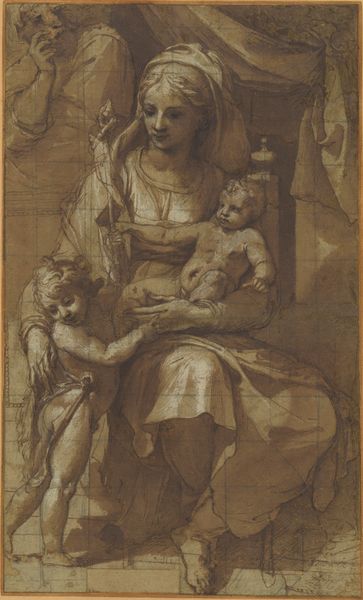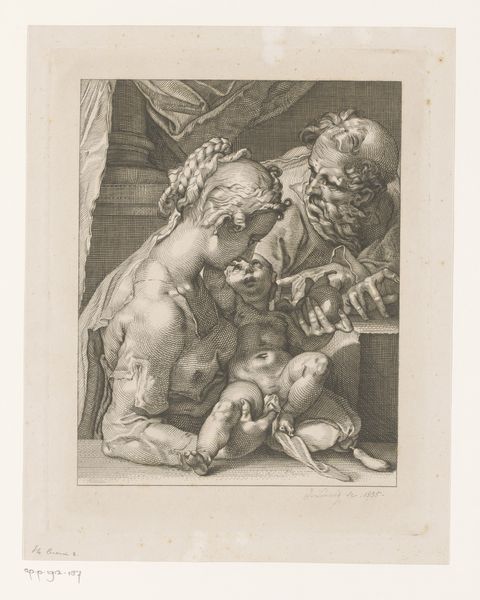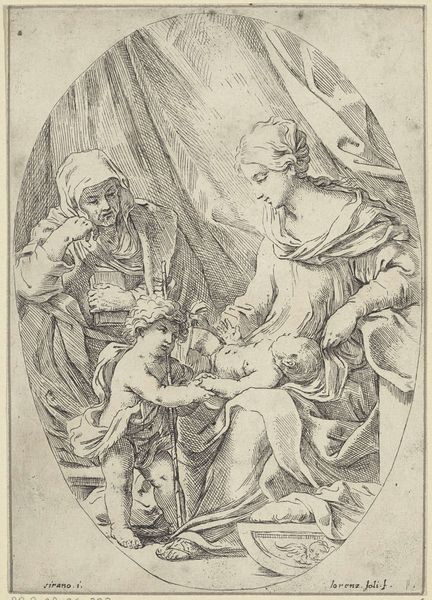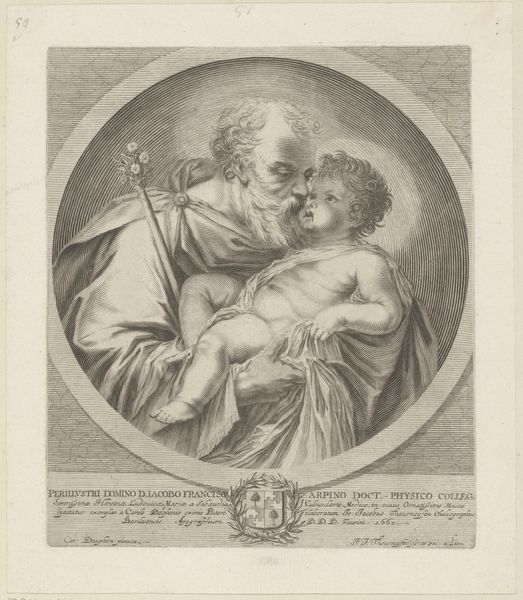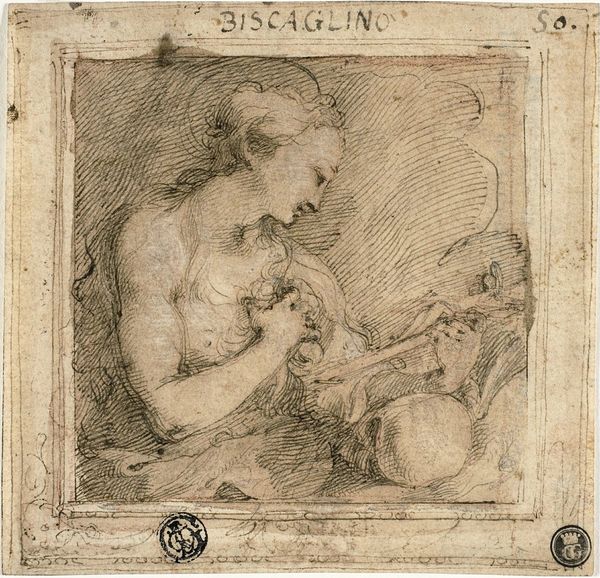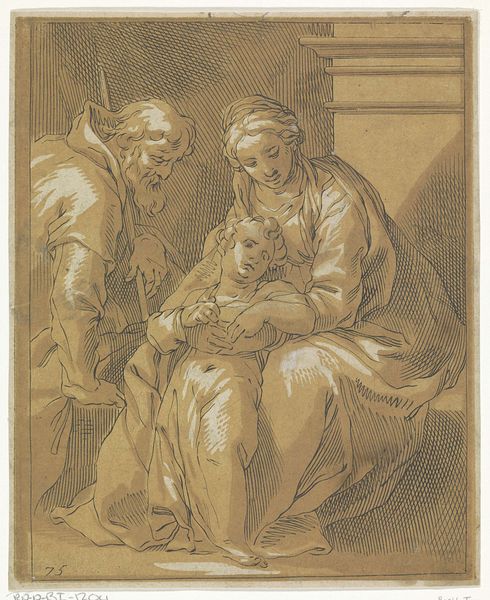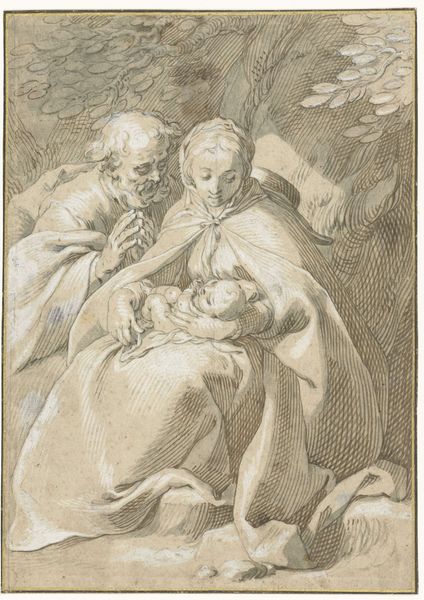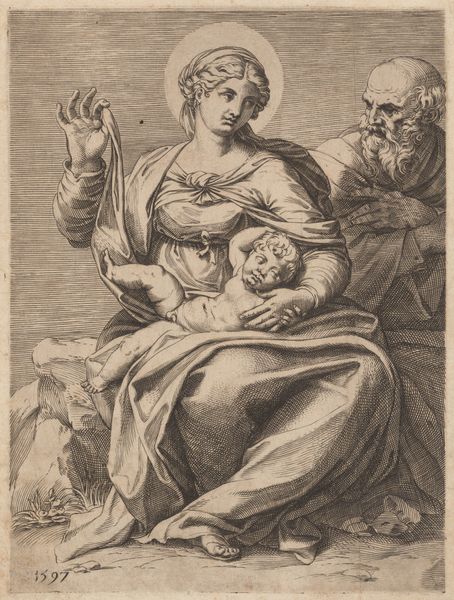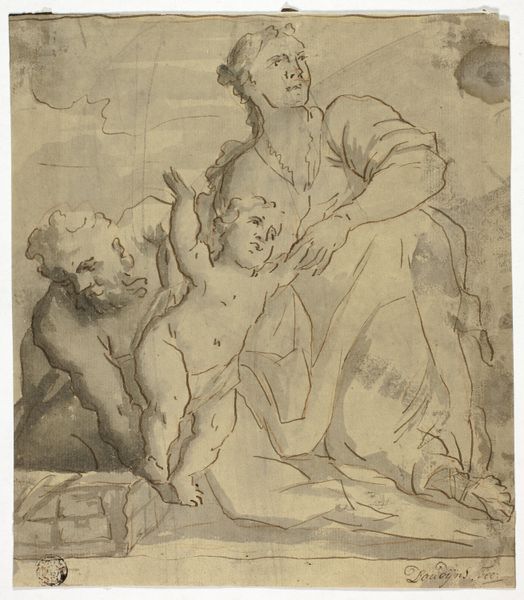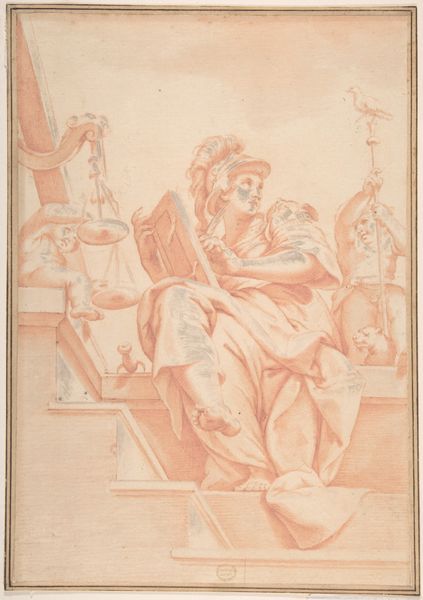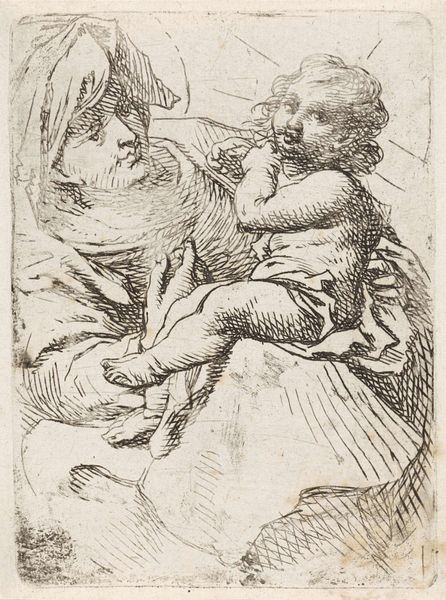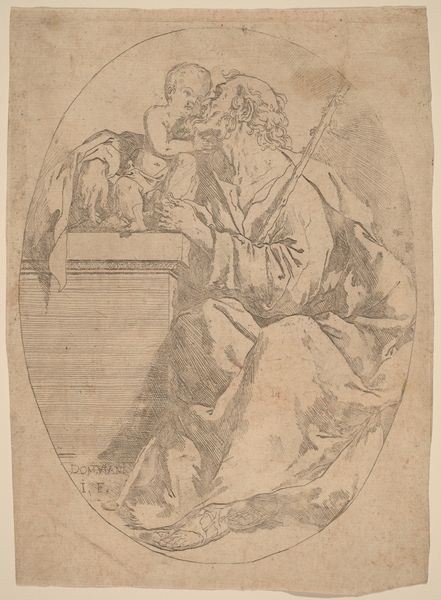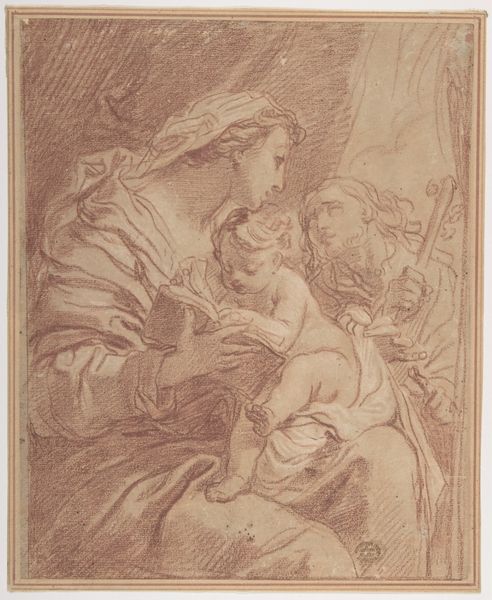
drawing, print, paper, ink
#
portrait
#
drawing
# print
#
charcoal drawing
#
mannerism
#
figuration
#
paper
#
ink
#
men
#
history-painting
Dimensions: 259 × 175 mm
Copyright: Public Domain
Curator: Giovanni Battista Paggi's rendering of *David with Goliath's Head and Sword*, created around 1587, immediately strikes one as exceptionally delicate. The sepia ink and wash on paper is carefully considered. Editor: Delicate is not a word that immediately comes to mind, honestly. Gruesome maybe? David standing over Goliath's severed head... it's brutal. Curator: Indeed, the subject matter is brutal. But notice the refinement of the line work, particularly in the soft modeling of David’s face and the decorative flourishes on the sword. See how Paggi modulates tone to give depth? He clearly prioritizes aesthetic elegance over raw narrative power. It’s very much in line with Mannerist principles, emphasizing grace and artificiality. Editor: And yet, that narrative is unavoidable. David, the underdog, triumphs over brute force, an incredibly potent and continuously repurposed allegory. Given the religious wars of the time, Paggi's patrons certainly appreciated the propaganda inherent to the theme. It speaks to power dynamics across society, faith overcoming seemingly insurmountable obstacles. Curator: Certainly. And in this iteration, there’s a focus on surface texture as much as depth, from the delicate rendering of David's hair to the more emphatic lines that suggest the rough edges of Goliath’s features, but the linear style directs our eye carefully through its elements. Notice how the angle of David's head and his intense gaze creates an invisible connection to the dead giant? Editor: His relative youth also accentuates David’s triumph. It wasn’t simply brute strength, but cleverness and faith that won this victory. Think about the implications for colonized peoples facing powerful empires. Think of the early modern Italian city-states as well and the constant threat they lived under. Art serves a powerful cultural purpose here. Curator: You are right. Though my concern lies primarily with understanding Paggi's decisions regarding form, I see that considering these larger issues sheds an interesting light on the work. Editor: Exactly. These choices don't exist in a vacuum; even formal decisions echo within history. Curator: Perhaps it can be said, therefore, that an artist can only ever make a statement on form alone, as meaning is always prescribed retroactively. Editor: An excellent summation, truly. Thanks to this exercise, the complexity and history embedded in this simple sketch has revealed something entirely new for me.
Comments
No comments
Be the first to comment and join the conversation on the ultimate creative platform.
